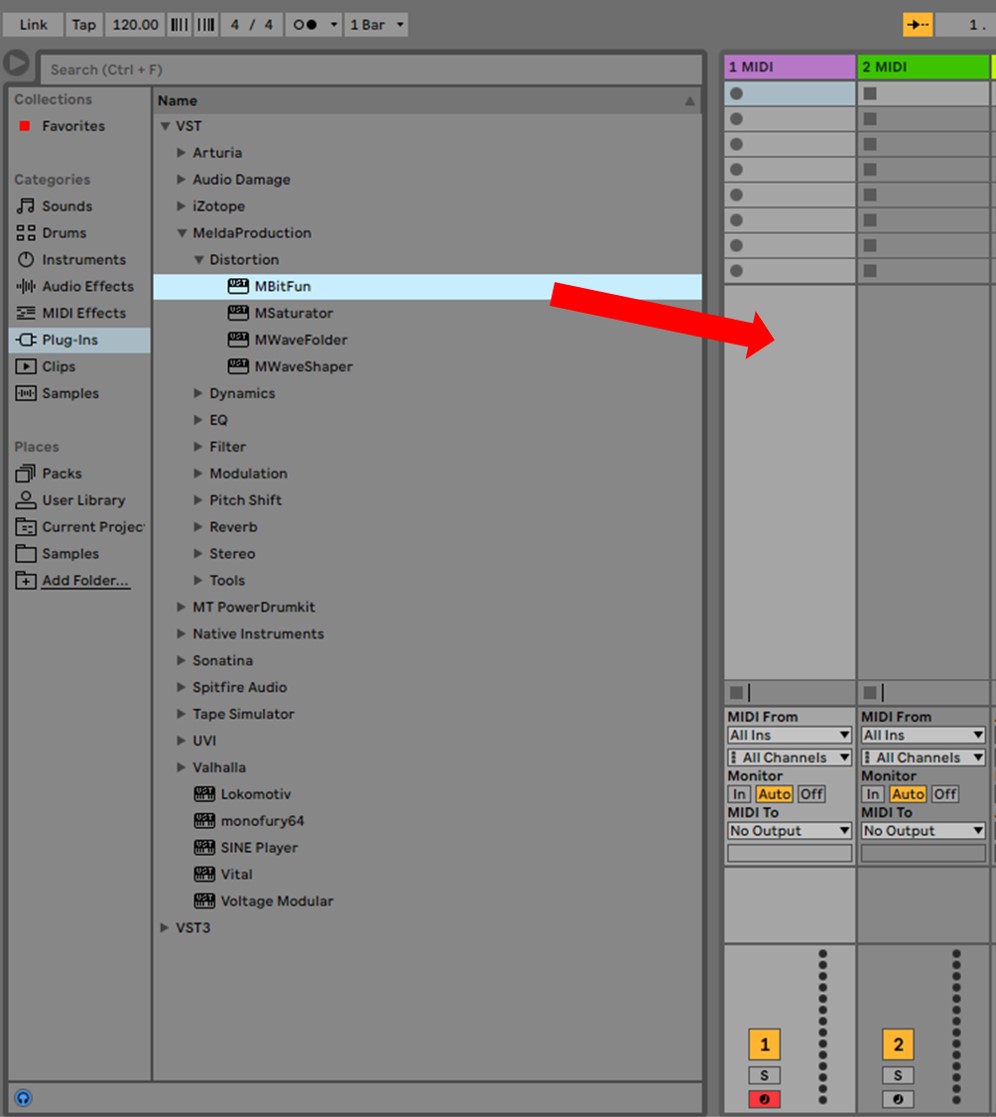
Just clicking that will not rescan Blacklisted plug-ins.To reset the blacklist, hold down the Option/Alt key on your keyboard, then click Rescan while continuing to hold down Option/Alt. In the Plug-Ins tab, you'll notice a button that says Rescan.If your plug-ins still aren't showing up, navigate back to the Plug-Ins tab in Preferences. These VSTi can be used in Ableton Live, Logic Pro, Steinberg Cubase, FL Studio, Bitwig and all other daw and hosts that support VST plugins and AU. After enabling those settings, check to see if Soundtoys appears in Ableton's browser.By default, you'll want to select the following location: Make sure Use VST Plug-In Custom Folder is set to On. Then, under Use VST2 Plug-In Custom Folder, click Browse, and select the folder where Soundtoys is installed on your computer. Click File Folder on the left side of the preferences window. Drag and drop UVI Workstation to a MIDI track. Turn Use VST2 Plug-In Custom Folder from off to on. From the Browser in Live, go to Plug-ins then Audio Units (or VST). Since Soundtoys does not currently support VST3, you'll need to enable VST2.3 - here you can set where your vst plugins and fx are located. In the Preferences window that appears, select the Plug-Ins tab on the left. 1 - copy and paste all of your dll files.the ones with the little cogs on to a new folder and name it vst plugins or whatever you like.Open up Ableton Live, and navigate to Live's Preferences.You're done! Ableton will now display your plug-ins in the browser.If you have many plug-ins installed, this may take some time, but it shouldn't last longer than a few minutes. Ableton will begin to reset and rescan all of your plug-ins.To reset the blacklist, hold down the Option/Alt key on your keyboard, then click Rescan while continuing to hold down Option/Alt In the Plug-Ins tab, you'll notice a button that says Rescan, but just clicking on that will not rescan Blacklisted plug-ins.However there are a huge amount of third-party VST effect plugins you can find on the web. If your plug-ins still aren't showing up, navigate back to the Plug-Ins tab in Preferences. Ableton comes with a wide selection of built-in effects such as EQs, reverbs, delays, flangers, vocoders, pedals and many many more. To do so, just switch the Use Audio Units and/or the Use VST2 Plug-In System Folder settings from off to on. Click Browse next to VST2 Plugin Custom Folder Navigate to the path from step 3 and click OK Now youre ready to load the plug-in. Soundtoys does not currently support VST3, so you'll need to enable VST2 and/or AU plug-ins in order to use Soundtoys in Ableton Live. If you've recently installed Ableton Live, it's likely that the default settings only have VST3 enabled.In the Preferences window that appears, select the Plug-Ins tab on the left.You can also use the keyboard shortcut "⌘," to open the preferences window.

In the top bar of your computer, click Live to open the dropdown menu, and select Preferences. I have plugins in at least 5 or 6 folders.Ableton Live Rescan Guide Rescanning Soundtoys in Ableton Live 10.1 MacOS

I selected the folder my Waves plugins were in and in doing so omitted about half of my collection.
Adding vst to ableton 64 Bit#
To begin with it only accepts 64 bit plugins which isn't a deal breaker for me, however, I could only select one folder. Another nifty feature is it can save scanned folders and launch very fast the next time.So long as I haven't bought a new plugin that daw doesn't scan every time I launch.Ībleton Live 10 OTOH seems to only allow one scan location which seems very odd to me. In a later video I will explain the difference between. It also has sandboxing in addition to seeing both 32 and 64 bit plugins. In this video I'll be showing you the fastest and easiest way to add VST plug-ins to Ableton Live 10. For instance in Cakewalk by Bandlab I can select multiple folders for a plugin scan. There seems to be a huge difference in the way Ableton deals with vst plugins as compared to some of my other daws. I'll admit the lack of a rewind button had me curious until I discovered the speaker function that almost works like a scrubber. I am now using it for the first time as a serious daw on a project I'm building. Firstly, ensure the VST Plug-In Custom Folder matches the location of your installed plugin. Ensure that ‘Use Audio Units’, ‘Use VST Plug-In System Folders’ and ‘Use VST Plug-In Custom Folder’ are all turned on. I'm still getting the hang of how some of it works. Open Ableton and navigate to Live’s Preferences. I have been using Ableton Live 10 to play backing tracks for awhile now.


 0 kommentar(er)
0 kommentar(er)
